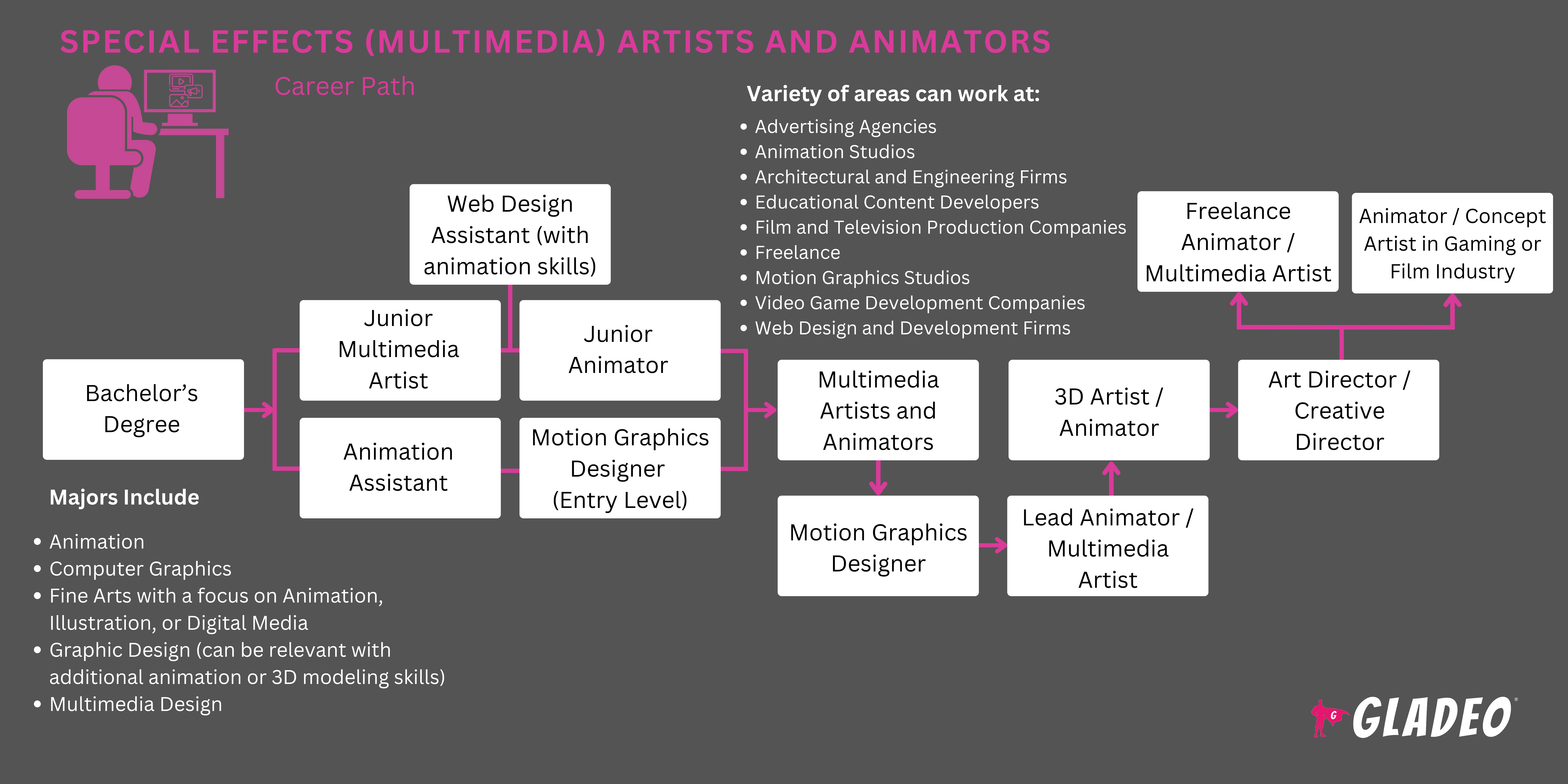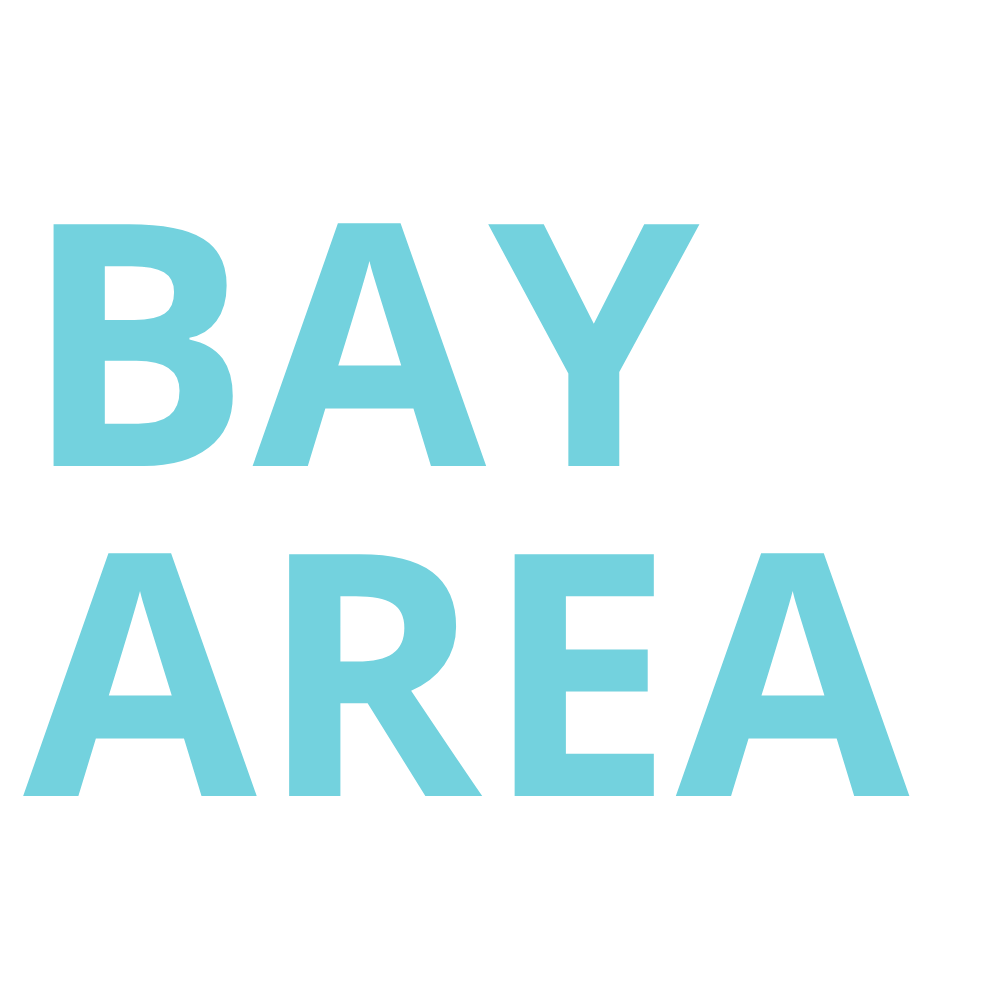Mga Spotlight
Kilala rin bilang mga 3D Animator, Digital Artist, Ilustrador, Prodyuser ng Multimedia, Animator; Mga Bahaging Dinisenyo ng Computer
Lahat tayo ay nakapanood na ng mga animated na palabas o pelikula na nagtatampok ng mga nakamamanghang visual effects (VFX) gamit ang computer-generated imagery (CGI). Ang kahanga-hangang obra na ito ay ginagawa ng mga mahuhusay na multimedia artist, na kilala rin bilang Special Effects Artists at Animators!
Ang mga Special Effects Artist at Animator ay malapit na nakikipagtulungan sa mga direktor, prodyuser, at iba pang malikhaing propesyonal upang bumuo at magpatupad ng mga visual effects upang mapahusay ang pagkukuwento. Ang kanilang mga gawa ay nagbibigay-buhay sa mga malikhaing karakter at mundo sa mga pelikula, palabas sa telebisyon, patalastas, at mga studio ng video game.
Ang trabaho ay nangangailangan ng espesyal na kombinasyon ng mga kasanayang pansining at teknolohikal upang magdisenyo, mag-render, at pagsamahin ang mga makatotohanan o pantastikong elemento, na kadalasang isinasama ang mga ito nang walang putol sa live-action footage. Ang dinamikong larangang ito ay mabilis na nagbabago salamat sa pagtaas ng paggamit ng mga sopistikadong kagamitan sa AI, na nangangailangan ng mga artista na manatiling flexible at nakatuon sa patuloy na pagkatuto.
- Pagbibigay-buhay sa mga mapanlikhang konsepto sa mga laro, palabas, at pelikula
- Mga pagkakataong magtrabaho gamit ang makabagong teknolohiya
- Pakikipagtulungan sa mga malikhaing pangkat sa mga proyektong may mataas na profile
- Makita ang iyong mga gawa na tinatamasa ng mga pandaigdigang madla
Iskedyul ng Paggawa
Ang mga Special Effects Artist at Animator ay karaniwang nagtatrabaho nang full-time, na may karaniwang overtime upang matugunan ang mga deadline. Ang kapaligiran sa trabaho ay mula sa mga studio at production house hanggang sa mga remote setup.
Ang mga gawain ay nakadepende sa uri ng produksiyon. Halimbawa, ang mga maiikling trabaho ay maaaring tumagal lamang ng ilang araw. Ang mga palabas na may ganap na animasyon at mga proyekto sa pelikula ay maaaring tumagal ng ilang buwan o taon. Ang mga live-action na pelikula na nagtatampok ng malawakang visual effects (VFX) ay maaari ring tumagal ng ilang buwan upang makumpleto ang pre-production concept art at post-production na gawain .
Ang mga mas may karanasang artista ay maaaring magtrabaho sa mga tungkuling previsualization at on-set supervision. Nakikipagtulungan sila sa mga direktor at cinematographer, na nagbibigay ng gabay sa mga setup ng green screen, motion capture, tracking markers, at mga partikular na galaw ng camera na nagbibigay-daan sa pagdaragdag ng mga post-production effect sa ibang pagkakataon.
Karaniwang mga Tungkulin
- Makipagpulong sa mga pangkat ng proyekto upang talakayin ang mga kinakailangan at takdang panahon.
- Magsaliksik at magpatupad ng mga disenyo o animation batay sa mga pangangailangan ng proyekto.
- Mga biswal na epekto gamit ang sketch o storyboard upang linawin ang hitsura ng mga partikular na epekto bago ang produksyon.
- Gumamit ng computer software upang magdisenyo, magmodelo, mag-texture, at magbigay-buhay sa mga karakter, bagay, at kapaligiran.
- Gawing mas parang buhay ang mga bagay at karakter sa pamamagitan ng pagmamanipula sa liwanag, kulay, tekstura, anino, at transparency.
- Gayahin ang mga pisikal na epekto tulad ng mga pagsabog, sunog, tubig, at iba pang mga dinamikong elemento.
- I-edit ang mga animation at effect batay sa feedback mula sa mga direktor, animator, o kliyente.
- Pagsamahin ang mga visual effect sa live-action footage, na tinitiyak ang tuluy-tuloy na timpla at realismo.
- Tiyakin ang pagkakapare-pareho at kontrol sa kalidad sa lahat ng elemento ng epekto.
- Mag-troubleshoot at lutasin ang mga teknikal na isyu na may kaugnayan sa rendering, compositing, at animation workflows.
Gaya ng isinulat ng College Gazette , “ Ang karamihan sa mga VFX ay maaaring hatiin sa tatlong kategorya – CGI, compositing, at motion capture (MOCAP)... Maaaring gamitin ang CGI upang lumikha ng mga 3D na modelo ng halos anumang bagay. Ang compositing ay nangangailangan ng isang green screen at kinabibilangan ng pagmamanipula ng dalawang magkalayo na elemento upang magmukhang nasa iisang lokasyon sila. Ang motion capture ay eksakto kung ano ang tunog nito – pagre-record ng mga galaw at mga nuances ng mukha ng isang aktor at paglalapat ng mga ito sa isang CGI na aktor o bagay. ”
Mga Karagdagang Tungkulin
- Gumawa ng mga ilustrasyon o sketch gamit ang tinta para i-scan at gawing mga digital animation.
- Gawing animated ang mga totoong bagay gamit ang mga pamamaraan ng pagmomodelo tulad ng optical scanning.
- Magtipon at mag-typeset ng mga digital asset para sa produksyon.
- Gayahin ang kilos ng mga animated na bagay upang lumikha ng makatotohanang galaw.
- Magdagdag ng mga visual effect sa mga pagtatanghal gamit ang motion capture.
- Ayusin ang mga katangian ng mga aktor gamit ang de-aging o mga pagpapahusay ng CGI.
- Makipagtulungan sa mga stunt coordinator, mga special effects team, at iba pang departamento upang iayon ang mga visual effects sa mga pisikal na eksena.
- Bumuo ng mga produktong pang-promosyon at mga presentasyon para sa marketing.
- Subaybayan ang mga rebisyon. Gumawa ng gabay kung paano gawin at dokumentasyon ng pagpapatuloy.
- Manatiling updated sa mga pinakabagong software, tool, at pamamaraan sa industriya.
Mga Malambot na Kasanayan
- Aktibong pakikinig
- Kakayahang umangkop
- Pansin sa detalye
- Kolaborasyon
- Komunikasyon
- Mga kasanayan sa konseptwalisasyon
- Pagkamalikhain
- Paggawa ng desisyon
- Nakatuon sa detalye
- Kakayahang umangkop
- Mga kasanayan sa organisasyon
- Pagka-orihinal
- Pasensya
- Pagtitiyaga
- Pagpaplano
- Paglutas ng problema
- Pagtutulungan
- Pamamahala ng oras
- Biswal na pagkukuwento
Mga Kasanayang Teknikal
- Mga kagamitan sa paggawa ng 360-degree na video
- 3D modeling at texturing
- Software para sa animation (hal., Maya, Blender)
- Mga kagamitan sa artipisyal na katalinuhan
- Teorya ng kulay at pag-iilaw
- Pag-coding ng kompyuter at pipeline ng VFX
- Mga tool sa pag-visualize ng data (Tableau, Power BI)
- Mga sistema ng pamamahala ng digital na asset
- Mga programang VFX tulad ng Adobe After Effects , Maya , Nuke , atbp.
- Mga digital na espesyal na epekto at mga proseso ng post-production
- Mga gaming engine (Unity, Unreal)
- Mga programa sa disenyo ng grapiko at pag-edit ng video (Adobe Creative Cloud, Final Cut Pro, Canva)
- Mga format ng multimedia, compression, at pamamahala ng file
- Mga kagamitan sa pag-edit ng larawan tulad ng Lightroom
- Pisika at anatomiya para sa makatotohanang mga animation
- Mga wikang pamprograma tulad ng Python at C++
- Mga kasanayan sa pamamahala ng proyekto
- Mga kuha sa pag-frame at pag-stage
- Kadalubhasaan sa pag-edit ng video, animation, o graphic design
- Nilalaman ng virtual reality (VR) at augmented reality (AR)
- Mga ahensya ng advertising
- Mga studio ng animation
- Mga kompanya ng produksyon ng pelikula at telebisyon
- Mga oportunidad sa freelance
- Mga developer ng video game
- Mga studio ng VFX
Ang tungkulin ay nangangailangan ng pinaghalong talento sa sining at teknikal na kahusayan, kasama ang kakayahang magtrabaho sa ilalim ng presyon. Ang pagtatrabaho para sa isang kumpanya ng VFX ay maaaring mangahulugan ng mahahabang oras, lalo na kung mayroong mahigpit na deadline o napakaraming kahilingan para sa mga pagbabago o mga bagong eksena.
Sa kabila ng kadalasang maiikling panahon para sa turnaround, inaasahang makakagawa ang mga Special Effects Artist at Animator ng mataas na kalidad na visual content na nakakatugon o lumalagpas sa mataas na inaasahan ng mga manonood. Ang pagmamadali o "masamang" VFX ay maaaring makasira sa reputasyon ng isang magastos na pelikula, na humahantong sa mababang performance sa takilya at pinsala sa pananalapi ng studio.
Binago ng mga streaming platform ang larangan ng libangan, at hinihingi ng mga manonood ang mataas na kalidad na visual sa halos bawat palabas o pelikula. Mabuti na lang at kayang-kaya ng mundo ng mga special effects at animation ang hamon, dahil binabago ng advanced software kung paano ginagawa ang VFX at mga animation. Higit kailanman, makakagawa ang mga artista ng mas detalyadong kapaligiran, karakter, at dynamic effects para sa mga pelikula, palabas, laro, at iba pang proyekto.
May lugar pa rin ang mga tradisyonal na praktikal na epekto sa sinehan, ngunit karamihan sa mga filmmaker ay yumakap na sa mga digital na kagamitan tulad ng teknolohiya ng de-aging at CGI. Sa pamamagitan ng pagpapadali sa mga kumplikadong proseso, ginagawang naa-access din ng mga kagamitang ito ang mga propesyonal na kalidad na epekto sa maliliit na koponan. Binibigyang-daan nito ang mga tagalikha na maayos na pagsamahin ang mga digital at live-action na elemento, na nagreresulta sa mga visual na natural na hindi namamalayan ng mga manonood na nanonood sila ng VFX.
Samantala, ang mga teknolohiyang tulad ng augmented reality at virtual reality ay nakatutulong sa mga game artist na lumikha ng masalimuot na simulation, makatotohanang disenyo ng karakter, at kamangha-manghang mga real-time overlay!
Ang mga Special Effects Artist at Animator ay kadalasang nasisiyahan sa pagguhit, pagkukuwento, at paglalaro ng mga video game. Malamang na nahumaling sila sa mga visual effects ng pelikula, gumugugol ng maraming oras sa pag-aayos ng kanilang mga animation o pag-aaral tungkol sa pinakabagong software.
- Ang mga Special Effects Artist at Animator ay karaniwang nangangailangan ng sertipiko mula sa isang paaralan na nakatuon sa digital arts o isang bachelor's degree sa visual effects, motion graphics, o computer animation.
- Maaaring kabilang sa mga karaniwang kurso ng VFX ang:
- 3D Modeling at Animasyon
- Pag-composite na Pinapatakbo ng AI
- AI sa Animasyon at Motion Graphics
- Mga Teknik ng VFX na Pinapagana ng AI
- Anatomiya para sa mga Artista
- Mga Teknik sa Chroma Keying (Berde/Asul na Screen)
- Simulasyon at mga Epekto ng Tela
- Pag-composite para sa mga Visual Effect
- Mga Teknik sa Pagbabago Mula Araw-sa-Gabi
- Digital na Makeup para sa Pelikula at Media
- Paggalaw ng Tugma at Pagsubaybay sa Kamera
- Pagsasama ng Daloy ng Trabaho ng Maya at NUKE
- Mga Simulasyon at Epekto ng Particle
- Pagmamapa ng Proyeksyon para sa mga Biswal na Epekto
- Mga Piroteknik at Pagsabog sa VFX
- Paglikha ng Extension at Kapaligiran ng Set
- Mga Epektong Stereoskopiko (3D) at Paglikha ng Lalim
- Pagbabago ng Oras at mga Epekto ng Mabagal na Paggalaw
- Maraming estudyante ang nagpapahusay ng kanilang mga kasanayan sa pamamagitan ng mga ad hoc online na kurso, pag-aaral sa sarili, at pagsasanay, o pagtatrabaho nang nakapag-iisa
mga proyekto sa video. Ang mga kurso sa komunikasyon, pamumuno, pagbuo ng pangkat, paglutas ng tunggalian, at pamamahala ng proyekto ay maaaring makatulong. - Mahalaga ang praktikal at praktikal na karanasan sa mga kaugnay na software. Mahusay ang mga online na kurso para sa pagkatuto ng mga bagong kasanayan! Maraming opsyonal na sertipikasyon na maaaring magpahusay sa iyong resume, tulad ng:
- Adobe Systems Incorporated – Eksperto sa After Effects na Sertipikado ng Adobe
- Apple Computer, Inc. – Apple Certified Pro: Logic Pro X
- Autodesk, Inc. – Propesyonal na Sertipikado ng Maya
- Sertipikasyon ng Sertipikadong Digital Artist – Visual Effects (Animator)
- CG Spectrum – Diploma ng mga Biswal na Epekto
- Pandayan – Propesyonal na Sertipikado ng Nukleo
- Gnomon – Sertipiko sa Digital na Produksyon
- Rebelway – Mga Sertipikasyon ng VFX Artist
- Pagsasanay sa SideFX
- Ang isang matibay na portfolio o effects reel ay makakatulong na maipakita ang mga kakayahan.
Hindi laging kailangan ng degree sa kolehiyo ang mga Special Effects Artist at Animator, ngunit para sa mga nagpaplanong kumuha nito, maghanap ng mga programang nagtatampok ng:
- Akreditasyon ng isang kinikilalang awtoridad sa pag-akredito .
- Mga instruktor na may karanasan sa industriya sa totoong mundo.
- Makabagong kagamitan at software, lalo na may kaugnayan sa AI.
- Mga pagkakataon para sa praktikal na karanasan sa pamamagitan ng mga internship sa mga animation at effects studio.
- Mga pagkakataong makipag-network sa mga propesyonal sa industriya.
- Mga flexible na iskedyul ng klase.
- Mga serbisyo sa karera na nag-aalok ng tulong sa paglalagay ng trabaho at resume.
- Kompetitibong matrikula at bayarin, pati na rin ang mga opsyon sa scholarship at tulong pinansyal.
Maraming community college, liberal arts college, at unibersidad ang nag-aalok ng mga kaugnay na degree at sertipiko sa Animation, Graphic Design, Fine Arts na nakatuon sa Visual Effects, o Multimedia Arts.
Ang mga online platform tulad ng Coursera ay nagbibigay ng mahahalagang ad hoc na kurso at sertipikasyon. Maaari ring kumuha ng mga kurso ang mga estudyante mula sa mga sumusunod na kumpanya:
- Adobe Systems Incorporated – Eksperto sa After Effects na Sertipikado ng Adobe
- Apple Computer, Inc. – Apple Certified Pro: Logic Pro X
- Autodesk, Inc. – Propesyonal na Sertipikado ng Maya
- Sertipikasyon ng Sertipikadong Digital Artist – Visual Effects (Animator)
- CG Spectrum – Diploma ng mga Biswal na Epekto
- Pandayan – Propesyonal na Sertipikado ng Nukleo
- Gnomon – Sertipiko sa Digital na Produksyon
- Rebelway – Mga Sertipikasyon ng VFX Artist
- Pagsasanay sa SideFX
Tingnan din ang Pinakamahusay na Mga Kolehiyo ng Visual Effects (VFX) ng College Gazette sa US para sa isang kumpletong pagsusuri ng Gnomon at iba pang mga programang maaaring isaalang-alang!
- Mag-ipon ng mga kurso sa sining, ilustrasyon, graphic design, computer coding at programming, at komunikasyon.
- Huwag kalimutang paunlarin ang iyong mga soft skills! Makilahok sa mga aktibidad kung saan matututo ka tungkol sa pagtutulungan, pamamahala ng proyekto, organisasyon, pamamahala ng oras, at paglutas ng mga hindi pagkakasundo.
- Tingnan kung Paano Gumagana ang mga Biswal na Epekto sa Pelikula: Isang Gabay sa 4 na Uri ng VFX mula sa MasterClass.
- Matuto mula sa sariling pag-aaral at pagsasanay sa bahay. Maghanap ng mga kaibigan at miyembro ng komunidad na nangangailangan ng dagdag na VFX sa kanilang mga proyekto.
- Isaalang-alang ang pagiging freelancing sa Upwork , Freelancer , o iba pang mga site para makakuha ng mas maraming karanasan habang sumasahod!
- Mag-aral ng mga libro, artikulo, at mga video tutorial (tingnan ang aming listahan ng Mga Mapagkukunan > Mga Website). Ang VFX Magazine at VFX Voice ay mga sikat na publikasyon na dapat tingnan.
- Manood ng iba't ibang palabas sa TV at mga segment sa likod ng mga eksena. Magtala ng mga VFX na iyong napapanood at pagkatapos ay saliksikin kung paano ito ginawa.
- Maging pamilyar sa ilan sa mga nangungunang kumpanya ng VFX . Basahin ang kanilang mga kasaysayan para sa mga ideya at inspirasyon.
- Magtanong sa isang nagtatrabahong Special Effects Artist kung mayroon silang oras para magsagawa ng isang informational interview sa iyo.
- Maging pamilyar sa pinakamaraming pamamaraan at programa ng VFX hangga't maaari.
- Maglunsad ng online portfolio upang ipakita ang iyong mga kasanayan. Ibahagi ang iyong mga gawa at itatag ang iyong reputasyon sa pamamagitan ng social media.
- Mag-apply para sa mga internship sa pelikula , dumalo sa mga film festival at mga open event ng film school, at sumali sa mga propesyonal na organisasyon upang matuto at mapalago ang iyong network.

- Kung mayroon kang sapat na akademikong kredensyal at matibay na portfolio, magsimulang mag-apply para sa mga trabahong VFX artist sa mga film job site at portal tulad ng Indeed , Simply Hired , at Glassdoor .
- Tingnan ang mga pahina ng karera ng mga kumpanya ng VFX na gusto mong pagtrabahuhan. Humanap ng mga internship o mga posisyon para sa mga entry-level na trabaho para makapagsimula ka.
- Tanungin ang iyong mga propesor, superbisor, at mga kasamahan kung maaari silang magsilbing personal na sanggunian.
- Magkaroon ng karanasan sa pamamagitan ng freelancing sa Upwork , Fiverr , at mga kaugnay na site.
- Sumali sa mga film festival at magpalathala sa mga journal sa industriya o sa mga sikat na website.
- Maging handa na lumipat sa mga estado o lungsod na may mas mataas na antas ng trabaho tulad ng California, New York, at Texas, upang mapakinabangan nang husto ang iyong mga oportunidad sa karera.
- Pumunta sa Quora o mga online VFX forum para humingi ng payo sa trabaho.
- Humingi ng tulong sa career center ng inyong paaralan para sa mga resume, mock interview, at paghahanap ng trabaho. Makipag-ugnayan din sa inyong professional network para sa mga tip tungkol sa mga bakanteng posisyon.
- Suriin ang mga template ng resume ng VFX Artist upang makakuha ng mga ideya para sa pag-format at pagbigkas. Suriin ang mga keyword na nakalista sa mga ad ng trabaho at subukang isama ang mga ito sa iyong resume, tulad ng:
- 3D na Animasyon
- Adobe Creative Suite (Photoshop, Illustrator, Premiere Pro)
- Pagkatapos ng mga Epekto
- Blender
- Pag-composite
- Imaheng Binuo ng Kompyuter (CGI)
- Konseptong Sining
- Green Screen/Chroma Key
- Animasyon ng Keyframe
- Pag-iilaw/Paglililim
- Maya
- Mga Grapikong Galaw
- Mga Sistema ng Partikel
- Post-Produksyon
- Mga Praktikal na Epekto
- Pag-render
- Pag-rig
- Pag-storyboard
- Pagmamapa ng Tekstura
- Mga Epektong Biswal (VFX)
- Pag-aralan ang mga tanong sa panayam para sa mga VFX artist , tulad ng “Maaari mo bang ilarawan ang isang proyekto kung saan kinailangan mong lumikha ng mga special effects mula sa simula?” o “ Maaari mo ba kaming gabayan sa iyong proseso para sa paglikha ng isang partikular na effect?”
- Manatiling updated sa mga kasalukuyang pag-unlad sa industriya at maging pamilyar sa mga terminolohiya bago pumasok sa mga panayam.
- Kapag tinawag ka para sa isang interbyu, magsaliksik tungkol sa employer upang matuto nang higit pa tungkol sa kanila.
- Palaging manamit nang naaayon para sa tagumpay sa job interview !
- Pagkatapos ng mga panayam, magpadala ng mga email ng pasasalamat upang ipahayag ang iyong pasasalamat at muling ipahayag ang iyong interes sa posisyon.
- Kausapin ang iyong agarang superbisor tungkol sa pagsulong sa karera.
- Magpursige ng karagdagang edukasyon, pagsasanay, at hasain ang mga espesyalisadong kasanayan tulad ng advanced na pag-edit ng video, animation, o motion graphics.
- I-update ang iyong portfolio at mga reel gamit ang iyong pinakamahusay na kalidad ng trabaho.
- Ibahagi ang iyong mga gawa sa social media, mga blog, o mga propesyonal na platform upang mapalawak ang iyong naaabot.
- Makipagtulungan sa iba pang mga tagalikha at influencer upang mapalago ang iyong madla.
- Manatiling updated sa mga kagamitan, teknolohiya, at uso sa industriya tulad ng mga kagamitang pinapagana ng AI o mga umuusbong na format ng media.
- Magboluntaryo para sa mga mapanghamon o kilalang proyekto upang maipakita ang iyong ambisyon at kakayahan.
- Magmungkahi ng mga makabagong ideya sa mga pagpupulong at aktibong humingi ng karagdagang mga responsibilidad.
- Magturo sa mga miyembro ng junior team at bumuo ng mga ugnayan sa mga superbisor, kasamahan, at mga lider sa industriya.
- Manatiling aktibo sa mga propesyonal na organisasyon. Dumalo sa mga kaganapan sa industriya at lumahok sa mga online forum o grupo upang manatiling konektado.
- Palaging ihatid ang mga proyekto sa tamang oras at sa loob ng badyet upang makakuha ng tiwala at pagkilala.
- Ibahagi ang iyong mga pananaw sa industriya sa pamamagitan ng mga blog, social media, o mga workshop.
Mga Website
- Akademya ng Sining at Agham ng Pelikula
- ACCESS VFX
- ACM SIGGRAPH
- Aksyon-Paggupit-Pag-print
- Lohika ng Hayop
- Samahan ng Animasyon
- Animation Skillnet
- Network ng Mundo ng Animasyon
- Sining ng VFX
- Asosasyon para sa Makinarya sa Kompyuter
- Bagong-bagong Paaralan
- Mga Studio ng Cartoon Network
- Cinephilia at Higit Pa
- Samahan ng mga Propesyonal sa Sining ng Komiks
- Digital na Domain
- Animasyon ng DreamWorks
- Encore VFX
- Magasin ng Gumagawa ng Pelikula
- Alyansa ng mga Gumagawa ng Pelikula
- Kaguluhan sa Pelikula
- Mga Tinanggihan ng Paaralan ng Pelikula
- Framestore
- Gabay sa FX
- IndieWire
- Industriyal na Ilaw at Mahika
- Animasyon ng Lucasfilm
- Mga Larawan ng Luma
- Method Studios
- Kumpanya ng Gumagalaw na Pelikula
- Pambansang Asosasyon ng mga Paaralan ng Sining at Disenyo
- Pambansang Samahan ng mga Kartonista
- Pambansang Kalooban para sa Sining
- Animasyon ng Nickelodeon
- Walang Paaralan ng Pelikula
- Pixar
- Mga Studio ng Rough Draft
- Samahan para sa mga Pag-aaral ng Animasyon
- Samahan ng mga Inhinyero ng Pelikula at Telebisyon
- Mga Larawan ng Sony Pictures
- Mga Mag-aaral na Gumagawa ng Pelikula
- Studio Ghibli
- OpenFX
- Magasin ng VFX
- VFX Soldier
- VFX na Boses
- Magasin ng VFXWorld
- Samahan ng mga Epektong Biswal
- Mga Studio ng Animasyon ng Walt Disney
- Animasyon ng Warner Bros
- Weta Digital
- Whiskytree
- WIRED - Disenyo FX
Mga Libro
- Digital Compositing para sa Pelikula at Video: Mga Daloy ng Trabaho at Teknik sa Produksyon , ni Steve Wright
- Inside VFX: Isang Pananaw ng Isang Tagaloob sa mga Visual Effect at Negosyo ng Pelikula , nina Pierre Grage at Scott Ross
- Ang Survival Kit ng Animator , ni Richard Williams
- Ang Sining ng 3D Computer Animation at mga Epekto, ni Isaac Kerlow
Ang pagiging isang Special Effects Artist o Animator ay nangangahulugan ng mahahabang oras at matinding pressure para makuha ang mga bagay nang eksakto kung paano gusto ng direktor, prodyuser, o superbisor. Maaari itong maging isang lubos na kapakipakinabang at dinamikong propesyon, ngunit para sa mga gustong galugarin ang higit pang mga opsyon, isaalang-alang ang mga sumusunod na trabaho!
- Direktor ng Sining
- Ilustrador ng Libro
- Ilustrador ng Komiks
- Programmer ng Kompyuter
- Manunulat ng kopya
- Tagadisenyo ng Kasuotan
- Direktor ng Malikhaing
- Espesyalista sa Digital Marketing
- Direktor
- Artistang Nagpapakita
- Mga Editor ng Pelikula at Video
- Tagadisenyo ng Laro
- Disenyador ng Grapiko
- Tagapangasiwa ng Marketing
- Potograpo
- Prodyuser ng Podcast
- Espesyalista sa Relasyon sa Publiko
- Espesyalista sa SEO
- Tagapamahala ng Social Media
- Manunulat ng UX
- Tagadisenyo ng Video Game
- Videographer
- Artista sa Pag-unlad ng Biswal
- Tagapamahala ng Nilalaman sa Web
Balita

Mga Itinatampok na Trabaho

Mga Online na Kurso at Kagamitan

Mga Inaasahang Taunang Sweldo
Ang mga bagong manggagawa ay nagsisimula sa humigit-kumulang $126K. Ang median na suweldo ay $155K bawat taon. Ang mga manggagawang may mataas na karanasan ay maaaring kumita ng humigit-kumulang $194K.






